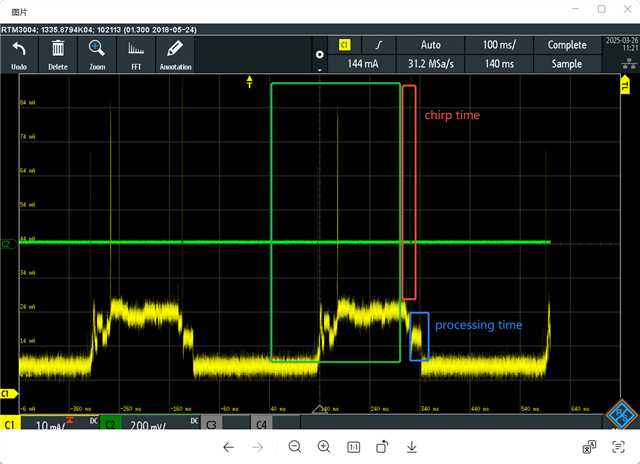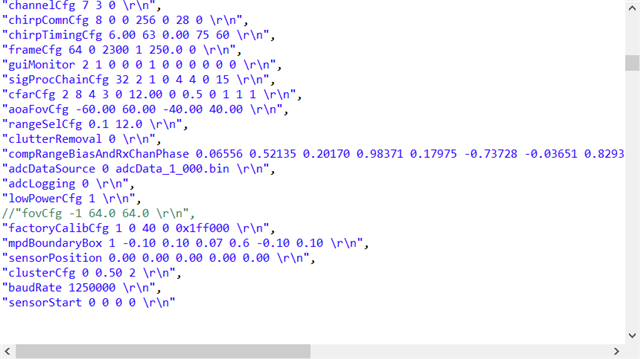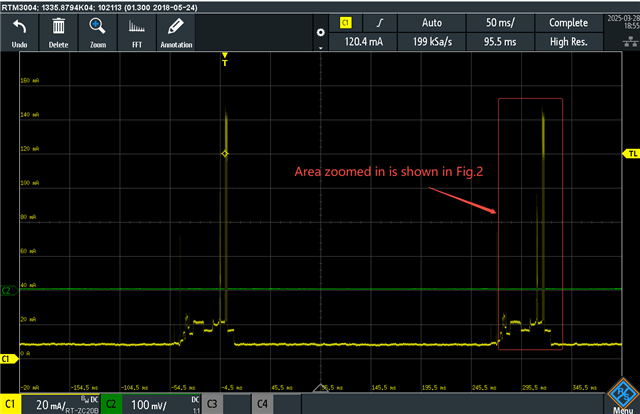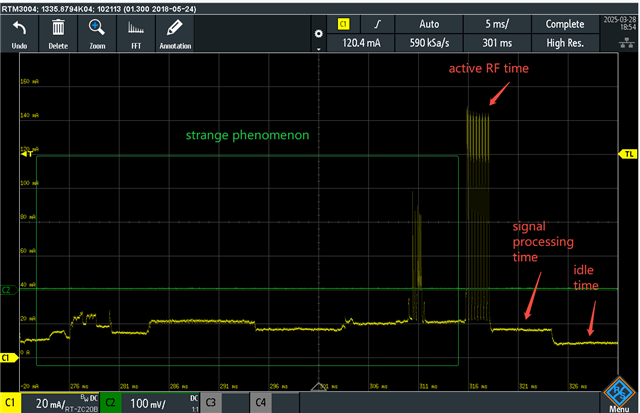Tool/software:
Hi specialists:
Now I configure AWRL6432 as Low-power mode and observe the current using oscilloscope. (See Fig. 1) The period of RF active (red) and signal processing (blue)can be observed, however, there is a period (green) in which current is larger than that of signal process. Is it reasonable? Thank you! (Now my hardware is 3.3 V IO Mode & BOM Optimized)
Fig 1. current measured by oscilloscope
Fig. 2 our waveform configuration

Regards,
Stan







